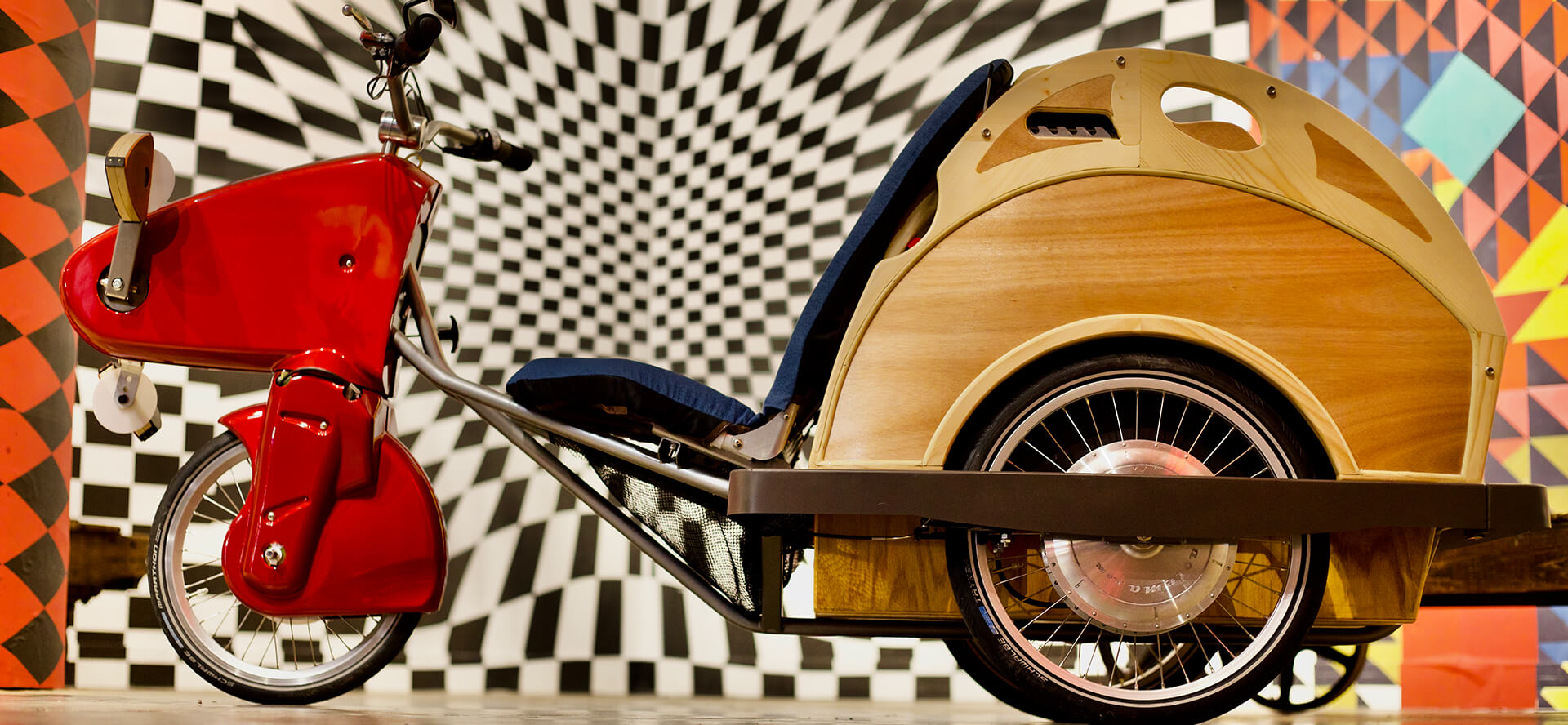
The inventor and founder of Benebici is Mr. Tom Payne, an experienced mechanical engineering grad who spent decades designing and making various electro-mechanical industrial, commercial and consumer products for large and small companies internationally. Tom admires machinery in general, transportation machines in particular. After a decade in a corporate middle management lockdown, he was spoiling for a geek fistfight and found it.
Like many communities, my area has seen many bike lanes appear as a result of roadway improvement projects. Bike lanes are seldom used where suburban housing is separated by miles from commercial destinations. I considered that a conventional bicycle is a poor substitute for a car even under ideal conditions, as everyone but cycling enthusiasts will attest. I wondered what it would take to make a bike that would come closer to useful transportation within a range of a few miles. As an engineer, I began a clean-sheet design study.
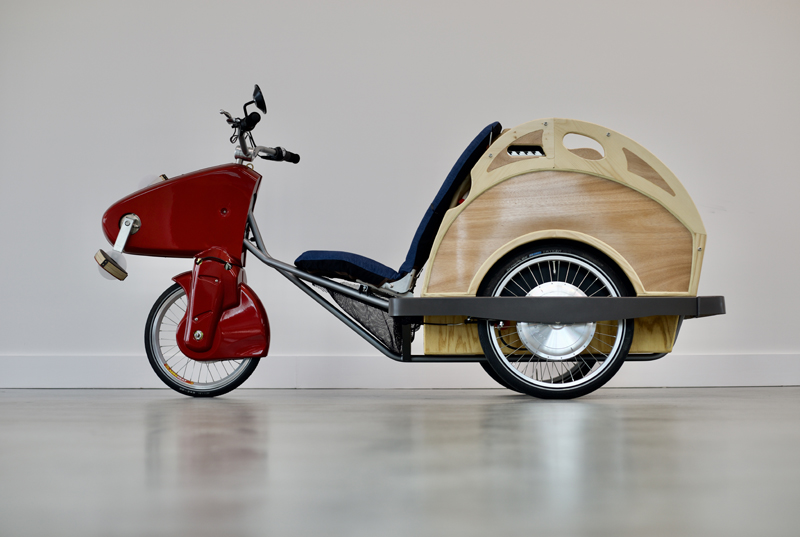
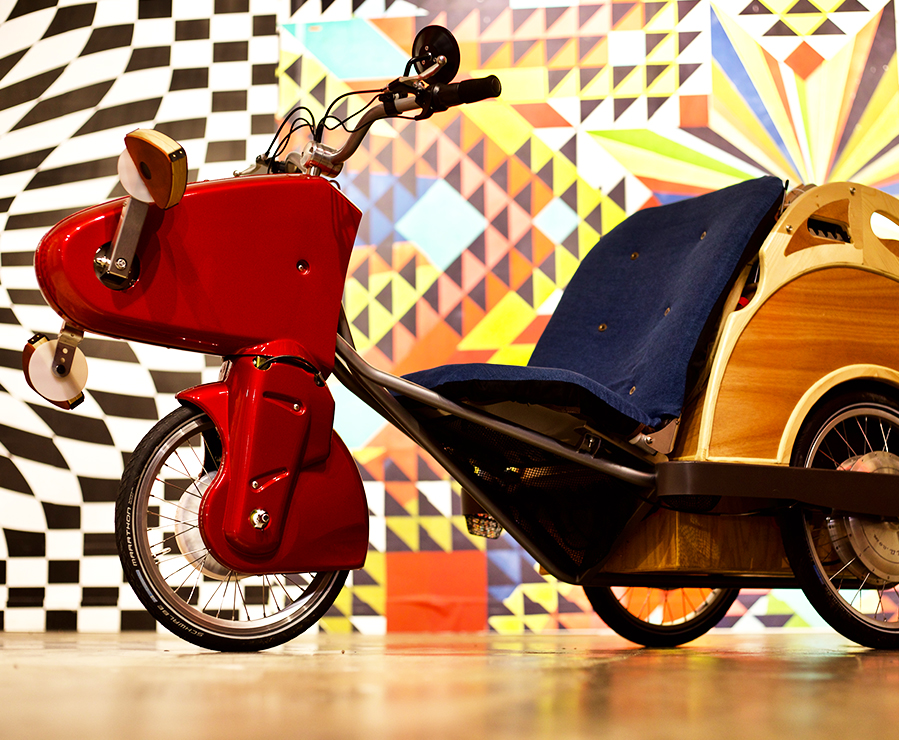
In more than a century of use, bikes and cars have been evolved by the traveling public for separate purposes. Can a bike adopt any of the essential advantages of a car, while remaining a bike? The vast power of combustion engines enables the useful characteristics of cars. Unfortunately, human power is pathetic compared to motor vehicle power, so we are tightly constrained. Fortunately, U.S. federal law allows for electric motor assisted bikes of two or three wheels to qualify for treatment like conventional bikes in most places. We know them as e-bikes, and they are generally conventional bikes with electric motor drive added. While the allowed e-bike motor power is a tiny fraction of combustion engine power, it is several times the average for our human motors.
I identified two key automotive features that could be adopted to move a cycle platform closer to automotive convenience: seating comfort and secure cargo capacity. People seem to enjoy the comfortable upholstery in their cars. Why not on a bike, too? Our semi-recumbent seat is serenely sized and situated like a full-sized chair. Cars have trunk compartments for secured stowage. Many conventional cycles have cargo baskets in various positions, but adding mass on two wheels isn’t ideal. Putting an enclosed, lockable trunk between two rear wheels increases utility and low-speed stability.
This machine will need to carry several hundred pounds of rider and cargo. The gross weight, fully laden, may approach 500 pounds. For the casual user, the electric drive will be primary and pedal power secondary. Applying motor drive to the rear wheels maximizes traction, and using wheels with hub motors allows differential drive for tight cornering without a conventional rear axle, which in turn allows heavy batteries and cargo to be placed low in the frame between the wheels. Such ballast helps to reduce top-heaviness that plagues conventional, upright cycle designs.
Anybody could do this much today, but there is a missing piece. The forward facing seat requires a pedal crank to be located in front. A short wheelbase is highly desirable to optimize vehicle size, weight, and turning radius, so a conventionally steered front wheel should be behind the pedal crank. This puts the pedal crank far from rear wheels lacking a mechanical differential, making front wheel pedal drive desirable.
Until now, cycles have used conventional drive chains and sprockets for pedal power transmission. Bikes have evolved to use extremely efficient and durable transmissions to make them highly effective transportation under human power, ideally suited for a steered front wheel and a driven rear wheel. Inventors have often seen a need for front-wheel-drive and have tried to adapt chain drive technology to a front wheel both steered and pedal driven with little success. Drive chains just aren’t made to be twisted like that, and geared transmissions that can withstand pedal drive torque are heavy and expensive.
To make this cycle configuration feasible, a new type of front wheel drive transmission had to be invented. Benebici uses a novel and patented gear drive system instead of chains and sprockets. It enables useful pedal drive under human power when desired, and allows unrestricted steering always – the missing link discovered!
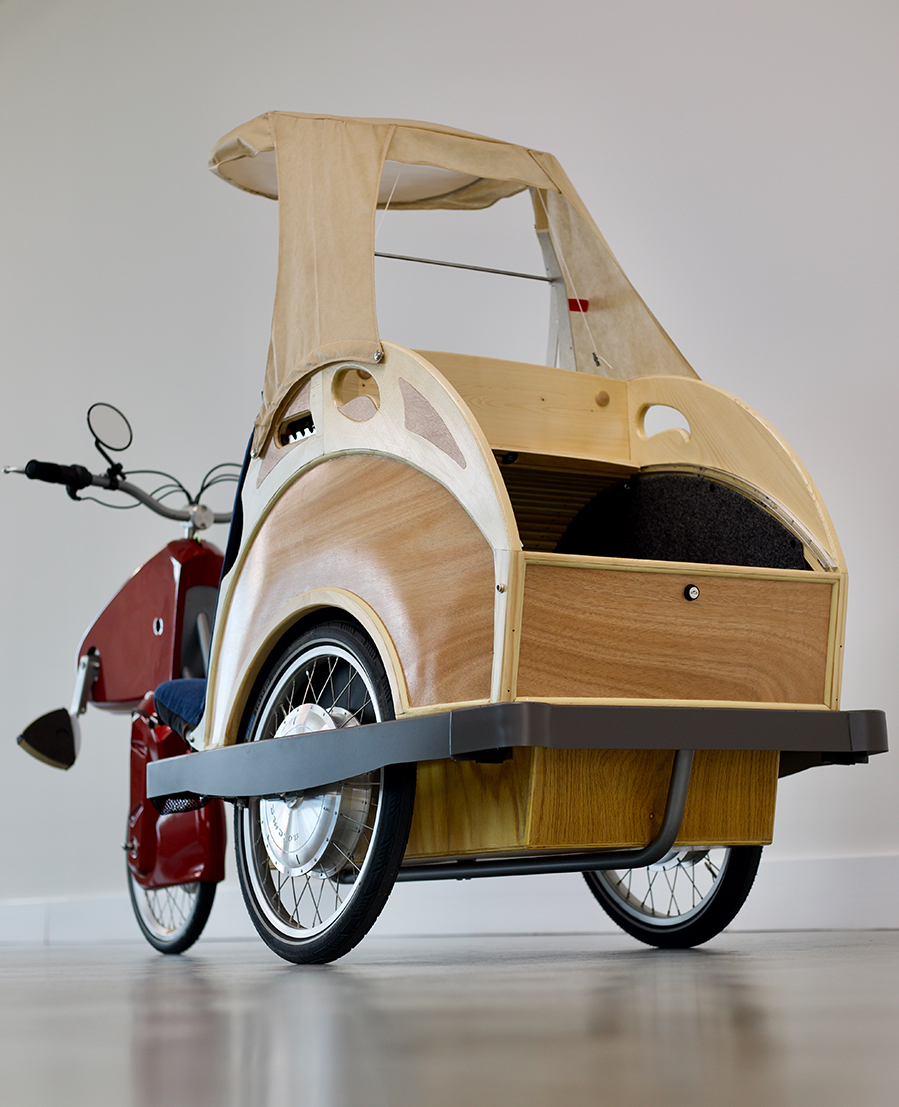
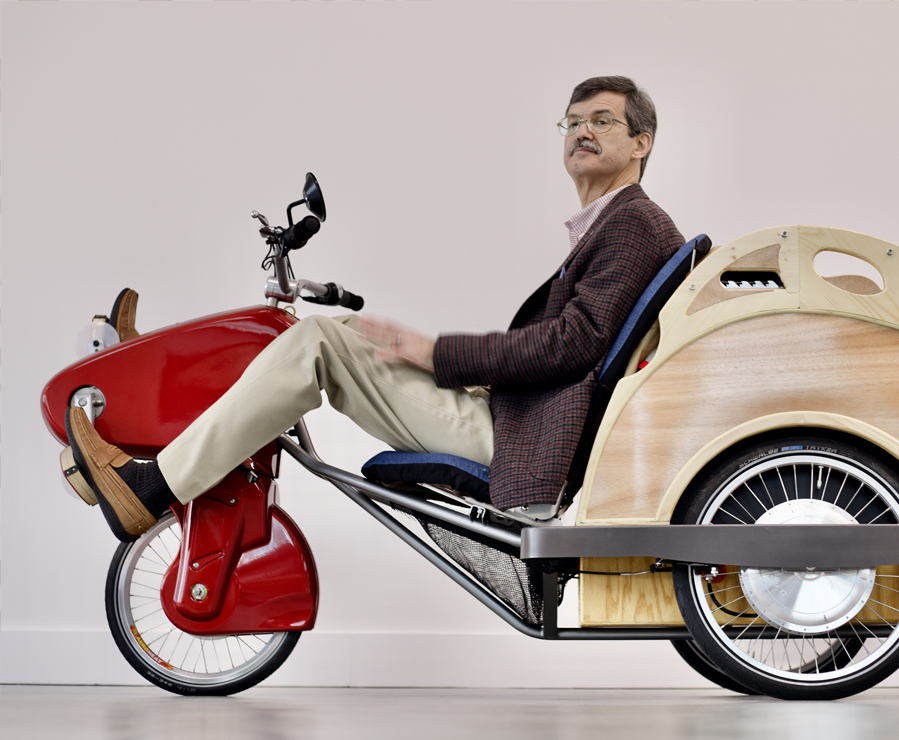
Benebici is designed to carry a person and a box of stuff over a greater distance than one might comfortably walk, but perhaps less than one would prefer to drive by car. It is designed to be highly stable at low speeds and highly maneuverable in congested spaces. The machine has a battery range of about 25 miles at 20 miles per hour top speed. If you travel in a locale where motor vehicle use is inconvenient and weather is fair, it can provide a useful option when a bike isn’t enough and a car is too much. The enclosed trunk compartment works for errands about town with multiple stops. At 30” wide, it can pass through an open doorway. Because it meets the federal definition of an e-bike, most state laws and municipal ordinances will treat it like a conventional bike and not as a motor vehicle.